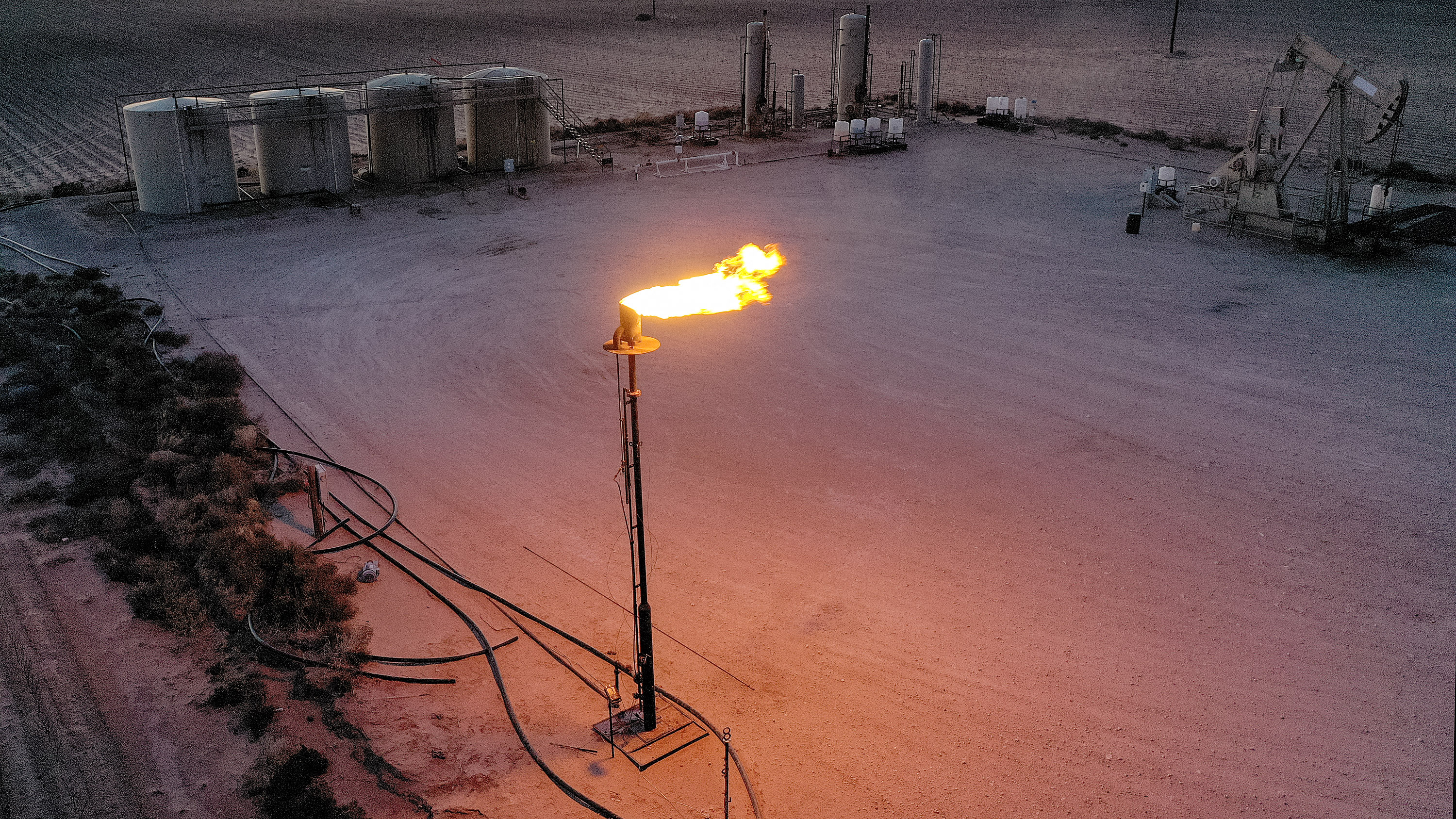A US oil-drilling hotspot is kicking out far more methane than we thought
A new study of the Permian Basin in New Mexico shows it leaked the greenhouse gas at double the expected rate from 2018 through 2020.

One of the largest and fastest-growing oil production sites in the US is emitting far more methane than previously measured. It’s well known that oil and natural-gas production is a significant source of the powerful greenhouse gas: methane that is trapped underground leaks out from wells and pipelines, and it can also be released intentionally through venting and flaring, or burning. But an aerial survey of the Permian Basin in New Mexico revealed more leakage than even the highest estimates had suggested to date.
Methane is an important greenhouse gas: while it’s much less abundant than carbon dioxide in the atmosphere and has a shorter life span once emitted, it’s about 86 times better at trapping heat. According to the new study, the site emits about 194 metric tons of the gas every hour. That’s about 9% of the site’s total natural-gas production, double previous estimates.
Researchers and environmental groups have long been monitoring the area, which spans across New Mexico and Texas, because it is well known as a methane hot spot. From ground monitoring by towers to satellite measurements, those previous studies suggested that methane emissions from the site amounted to under 4% of total natural-gas production in the area.
“We were initially surprised by the magnitude,” says Yuanlei Chen, a graduate student at Stanford’s Energy Resources Engineering program and one of the authors of the study.
The airplane taking measurements was able to cover about 100 times more sites than previous ground surveys. By flying over active wells and pipelines in the New Mexico section of the basin, the plane detected 1,985 methane plumes over the course of 15 months.
In addition to discovering higher levels of methane leakage than expected, the survey also identified a few mega-emitting sites. Just about 5% of the plumes that the plane detected were responsible for over half the measured emissions.
The findings add to calls for toughening methane regulations on oil and gas producers. At the time this data was collected, from 2018 through 2020, oil production was increasing quickly, and regulations in the area were looser than they are today. New Mexico recently passed legislation banning routine flaring of excess natural gas. Stronger federal policies are still needed to cut emissions in other oil-producing states like Texas, says Jon Goldstein, a senior policy director at the Environmental Defense Fund.
In any case, the new findings show how comprehensive surveys can shed light on methane emissions, which are often poorly understood even in major oil and gas basins like the Permian. As governments continue to target emissions, identifying problem spots can be a useful first step.
Deep Dive
Climate change and energy
The problem with plug-in hybrids? Their drivers.
Plug-in hybrids are often sold as a transition to EVs, but new data from Europe shows we’re still underestimating the emissions they produce.
Harvard has halted its long-planned atmospheric geoengineering experiment
The decision follows years of controversy and the departure of one of the program’s key researchers.
Why hydrogen is losing the race to power cleaner cars
Batteries are dominating zero-emissions vehicles, and the fuel has better uses elsewhere.
Decarbonizing production of energy is a quick win
Clean technologies, including carbon management platforms, enable the global energy industry to play a crucial role in the transition to net zero.
Stay connected
Get the latest updates from
MIT Technology Review
Discover special offers, top stories, upcoming events, and more.